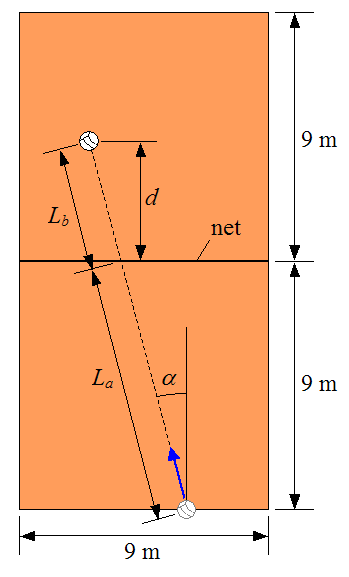Final Blog - A Tribute to Volleyball
One of my favorite sports to play is volleyball. I was introduced to the game when I was a freshman at La Salle. With no experience, I tried out for the men's team. Luckily, they did not make any cuts that year. I spent two years playing junior varsity and one playing varsity at the academy. My coach always talked about using physics to improve our serves. This final blog is a tribute to him and a guide to make your game better.
Volleyball games start with a serve. To optimize a volleyball serve is to minimize the time the ball spends in the air. This, in turn, minimizes the reaction time of the opposing team, making it more difficult for them to return the shot.

La = is the distance from the serve location (behind the end line) to the net, along the direction the volleyball is served
Lb = is the arbitrary distance from the net to where the ball lands on the other side of the court, along the direction the volleyball is served
d = is the distance beyond the net where the ball lands
a = is the angle the volleyball trajectory makes with the sideline
In addition to having a long serve, having some spin to make the ball dive is essential. To make the ball dive, you serve the ball while snapping your wrist. The Magnus effect then comes into play.
Rather than explaining the phenomenon, here is a video showing the Magnus Effect-
That is all you need for a good serve, besides some power. Make sure to hit the gym to get some more potential energy behind the ball!

Comments
Post a Comment